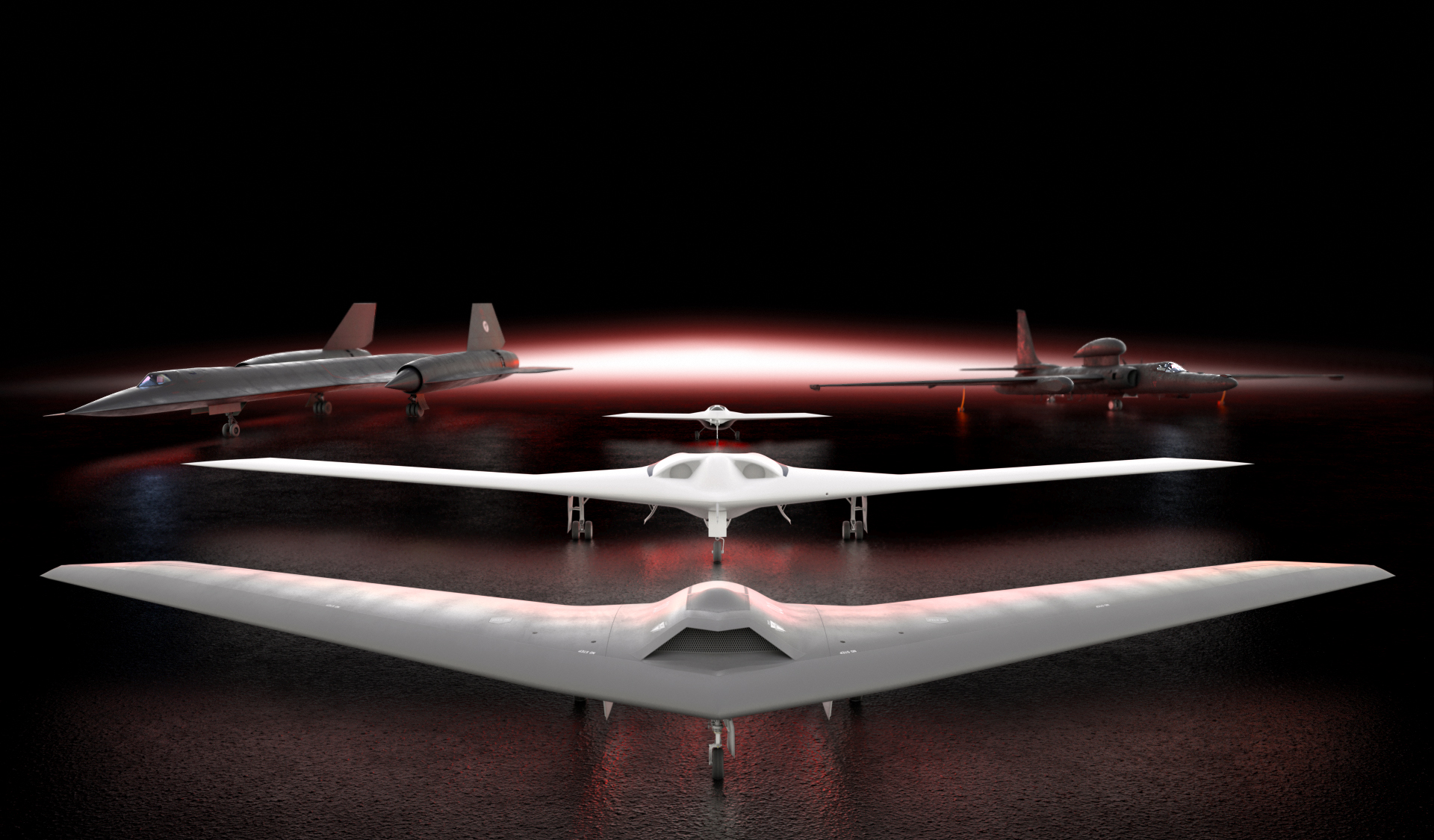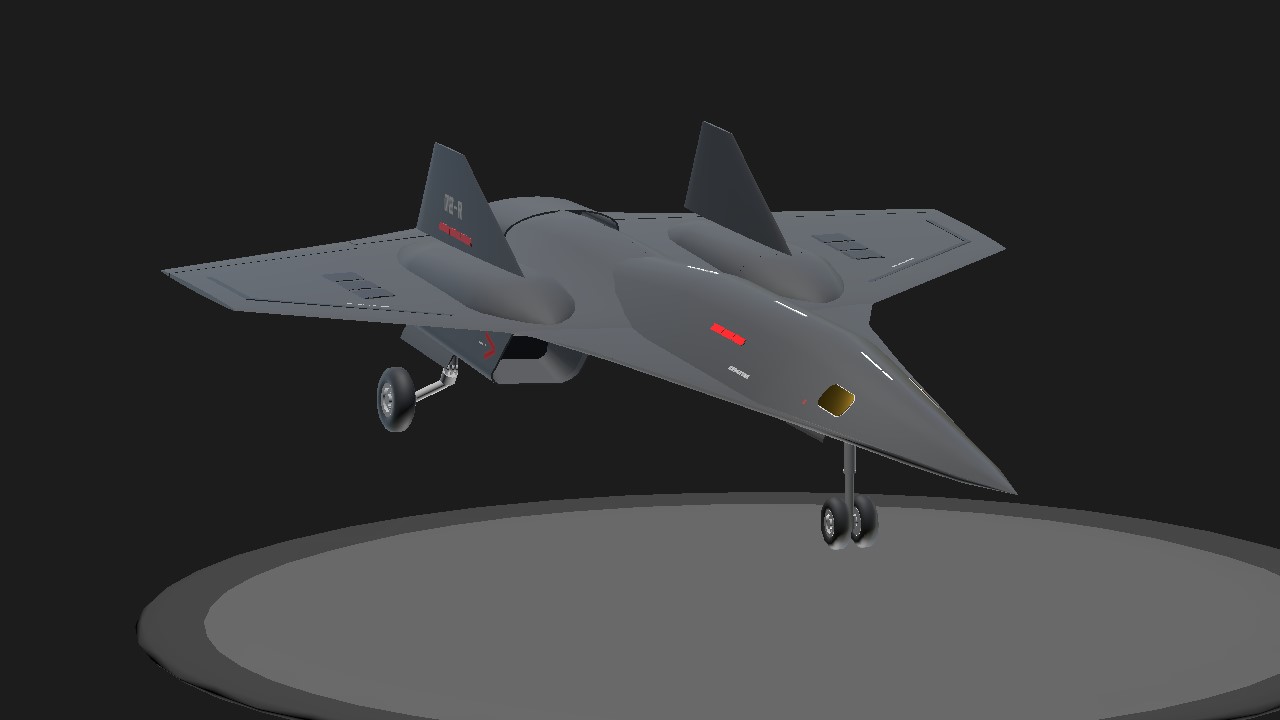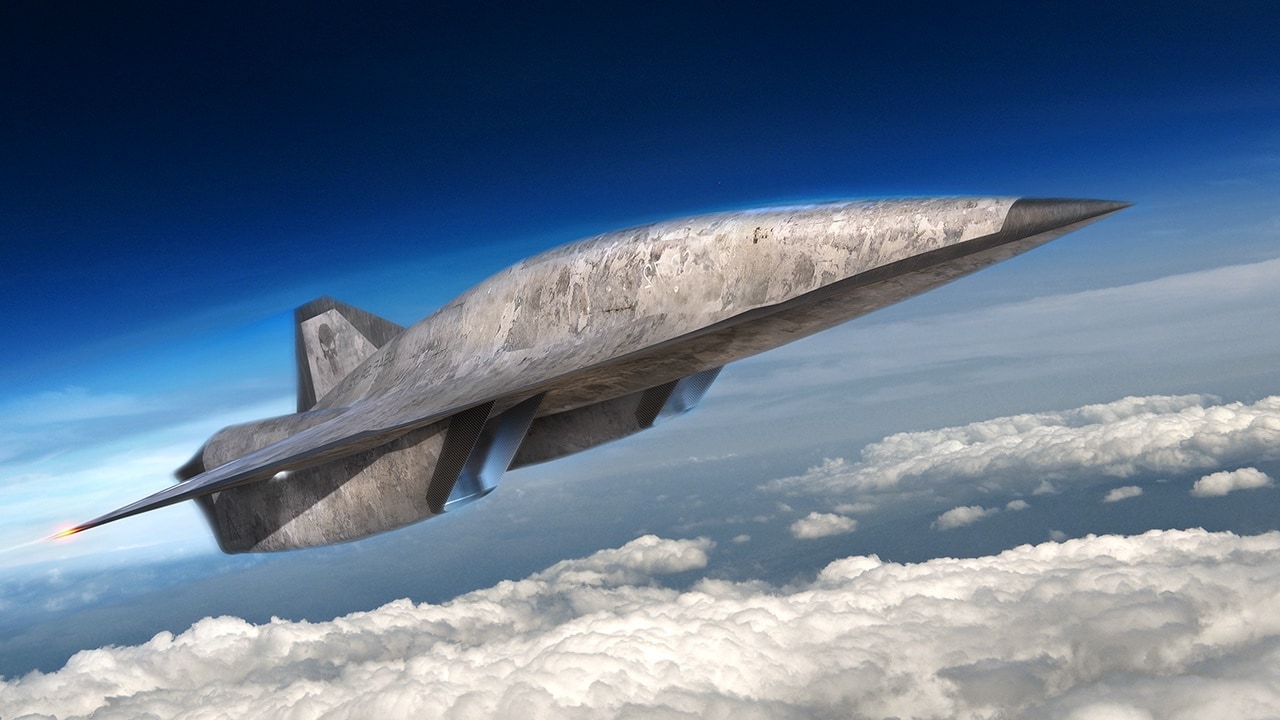Dark Star Drone - The RQ-3 Darkstar (known as Tier III or "Tier Three Minus" during development) is an unmanned aerial vehicle (UAV). Its maiden flight was on March 29, 1996. The Department of Defense terminated the Darkstar in January 1999 after determining that the UAV was aerodynamically unstable and did not meet cost and performance goals.
Making it difficult to detect, which allows it to operate in heavily defended airspace, unlike Northrop Grumman's RQ-4 Global Hawk, which can only operate in conditions of air supremacy. Darkstar is completely autonomous: it can fly without human intervention, fly to its target, operate sensors, transmit information, return and land. However, human operators can change Darkstar's flight plan and satellite navigation via radio or satellite relay. The RQ-3 carries an optical sensor or radar that can transmit digital information to satellites in flight. It uses an unknown type of air-breathing jet engine for propulsion. One source said it used a Williams-Rolls-Royce FJ44-1A turbofan engine.
Dark Star Drone

The first prototype made its maiden flight on March 29, 1996, but crashed shortly after takeoff during its second flight on April 22, 1996. An improved, more stable design (RQ-3A) first flew on June 29, 1998, and a total of five flights were canceled before the sixth and final flight planned for the airworthiness test phase. Two more RQ-3As were built, but never flown before the program was canceled.
Understanding Positioning, Navigation And Timing For The Military's Unmanned Aircraft
Although the RQ-3 was phased out on January 28, 1999, a July 2003 Aviation Week and Space Technology article reported that in April 2003, derivatives of the RQ-3 were used in the 2003 invasion of Iraq.
"R" is the defense designation for reconnaissance; "Q" is for unmanned aerial systems. The "3" refers to the fact that this is the third in a series of dedicated UAV systems. Last year, the US Air Force announced that it would reduce its fleet of Global Hawk spy drones, likely opting for the stealthy RQ-180, a stealthy flying-wing surveillance drone that was reportedly in service in early 2017. The US Air Force has never officially acknowledged the existence of the Northrop Grumman RQ-180, which first flew in 2010 and may have been deployed near China in September 2020.
However, while few details are known about the Flying Wing platform, it is not the first stealth drone used by the Air Force.
The RQ-3 DarkStar made its first flight nearly 25 years ago, but a year later, instead of "crashing in a blaze of glory," the first prototype crashed on its second flight. It is a suggestion that these shortcomings should be addressed in highly advanced stealthy reconnaissance remotely operated aircraft (RPA).
Isr & Unmanned Systems
Developed under the Advanced Airborne Reconnaissance System (AARS) program to operate in high-risk environments, the RQ-3 incorporates stealth aircraft technology to operate in highly secure airspace.
This is in contrast to the RQ-4 Global Hawk, which can only operate in airspace where the United States essentially has air supremacy.
Construction of the second prototype began in mid-1998 and participated in a total of five flights before the program was canceled a year after airworthiness testing.

Darkstar is also notable as a fully autonomous platform that can take off, fly to a target, operate sensors, transmit information, return and land without any human intervention.
Top Gun: Maverick Lockheed Martin Sr 72 Dark Star By Bagera3005 On Deviantart
Using a digital link to transmit sensor imagery, Darkstar can also provide globally real-time information – ground station operators can control the RPA from anywhere in the world using a satellite link if needed. It has a reported range of 575 miles and a flight time of eight hours.
Unlike the unmanned aerial vehicles (UAVs) developed at the time, the Darkstar was notable for its disc-shaped fuselage, which was sleekly contoured and overall larger. It has a wingspan of 69 feet and straight wing appendages with a height of 3 feet 6 inches.
The RQ-3 DarkStar weighed 8,500 pounds and was powered by a Williams-Rolls FJ44-1A engine with 1,900 pounds of takeoff thrust. It offered a cruising speed of 288 mph and a service ceiling of 45,000 feet.
A total of four were built, including the first prototype that crashed. The program was discontinued due to cost and aerodynamic stability issues. While the Darkstar is a unique autonomous drone, it may be a testament to the unmanned systems of the future, not a failure.
Skunk Works Helped Create The Darkstar Jet For Top Gun: Maverick
All three surviving prototypes are now housed in various aviation museums, including the National Museum of the United States Air Force at Wright-Patterson Air Force Base in Dayton, Ohio; and Seattle's Museum of Flight; And the fourth, which has never flown. The prototype is currently housed at the Smithsonian National Air and Space Museum in Washington, DC, but is not currently on display.
Peter Suciu is a Michigan-based writer who has written for more than four dozen magazines, newspapers and websites. He is the author of several books on military headgear, including Captain Pete "Maverick" Mitchell Flying the Darkstar to Mach 10 - a reusable hypersonic manned aircraft, a Lockheed A product of Martin's Skunk Works - note the skunk on the plane's tail. Lockheed Martin's logo in the movie.
I felt a pang of pride when I saw the familiar logo—my father had worked at Lockheed Martin's advanced development project—known as Skunk Works—for more than 30 years. Dad never told us what he did. He can't do it. He will be on a business trip "somewhere in the desert." When someone asked our fathers what they did, our children were taught, "Dad makes rockets."

The skunk plant – so named for the strong, foul odor the plant produces, especially on hot days – is, as its name suggests, a secret place.
Zipline's Drones Are Delivering Medical Supplies And Ppe In North Carolina
The skunk is the mascot of the "Skunk Works", a Lockheed Martin Advanced Development term dating back to 1943, when engineer Clarence L. "Kelly" Johnson led a team in Southern California tasked with creating military-designed jet aircraft. Unable to find a production site due to the war, the team worked in a rented circus tent next to a plastic manufacturing plant.
According to a Lockheed Martin spokesperson, Paramount Pictures approached the aerospace company about the production in 2017.
"Lockheed Martin Skunk Works has designed and produced a conceptual reusable manned hypersonic aircraft, called the Dark Star in the film," she said.
— SR stands for Strategic Reconnaissance — now retired super-fast design; and Lockheed Martin's F-35, also known as "the world's most advanced fighter jet."
Alphabet's Wing Is Working On Larger Drones That Can Handle Heavier Deliveries
Darkstar and the SR-72, a concept named "Son of the Blackbird", were apparently floated in the press in 2013 but never confirmed as a concept by Skunk Works.
Hypersonic technology continues to advance, and the work Lockheed Martin is doing today is laying the groundwork that will one day make reusable hypersonic vehicles like the Darkstar possible. "
The fictional plane was built for five years. The development team took this seriously, with "shapes, materials and components that must withstand the thermal and environmental stresses caused by high-speed flight."

Additionally, Lockheed Martin "helped design realistic flight rigs, shared set artwork, and organized field trips and demonstrations to support the effort. The team provided insights to bring realism to the story, and served as a consultant throughout the filming process," a company spokesperson said. .
The Real Story Of Darkstar In 'top Gun: Maverick'
There you will find more information about the project and the many Lockheed Martin designers working on it, known only by their first names: Jim, Jason, Lucio and Becky.
Jim was in charge of concept design. Jason and Lucio handled the task of turning the conceptual design into an actual aircraft model with a working cockpit. Becky is a mechanical engineer who worked with the film crew to build a Darkstar vehicle with a functional cockpit. It was his job to keep the model organized throughout the shoot.
The Dark Star mission is not openly discussed in the film. However, we are told that the government wants to cancel funding for the project because it has not yet hit Mach 10. It has been reported that the test flight contract has set a specific target to reach Mach 10 and not below Mach 9.
Captain Pete "Maverick" Mitchell changed the rules slightly to get "one last test flight". Piloting involves a commitment to set and achieve goals, but not to push the envelope. Maverick was warned not to fly - Mach 9, 905.42 mph.
The Sr 72 Darkstar: Like The Sr 71 But Way Better Armed
There is a dramatic sequence when Maverick puts on his high-altitude flight suit and helmet for a pre-sunrise launch. Tension builds as the plane climbs into the morning sky, the cockpit match readings moving towards the target value.
"Operating in the hypersonic flight range is difficult," said a Lockheed Martin spokesman.
X star drone battery, star wars drone toy, x star premium drone, drone star, x star drone, drone star trek, star wars rc drone, star wars drone, star wars battle drone, propel star wars drone, dark drone, autel x star drone
0 Comments